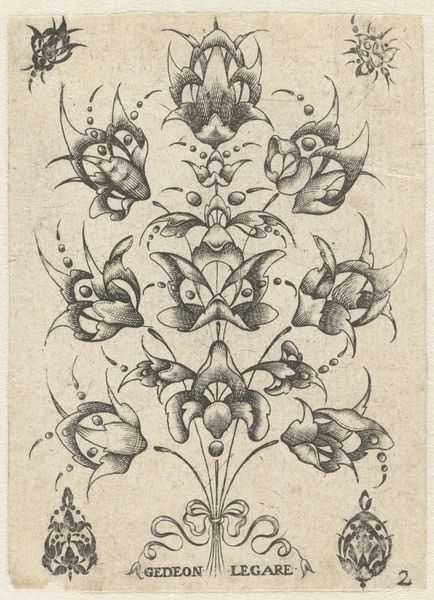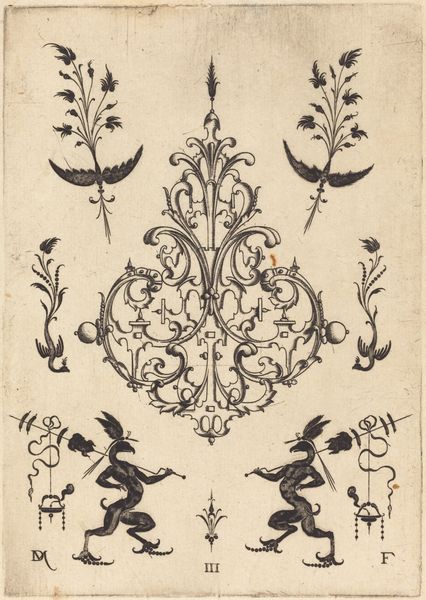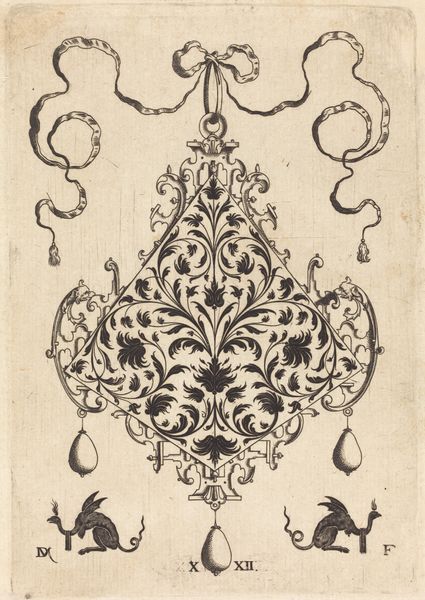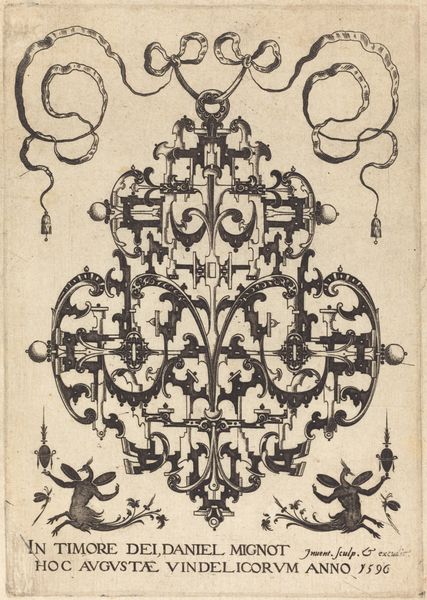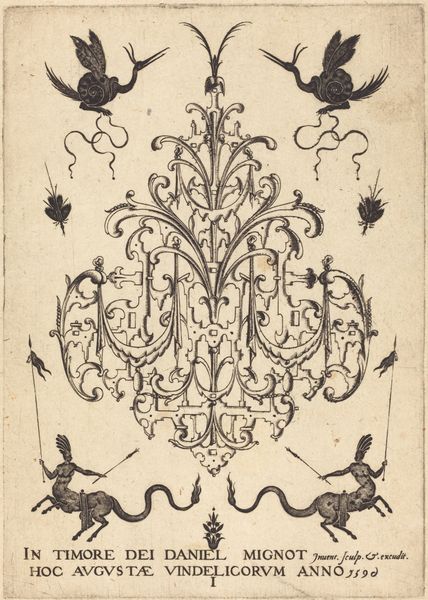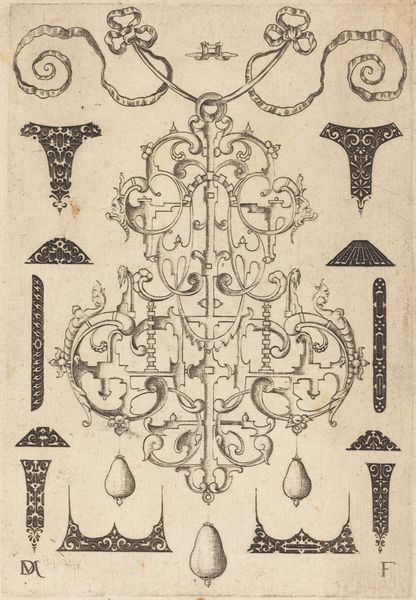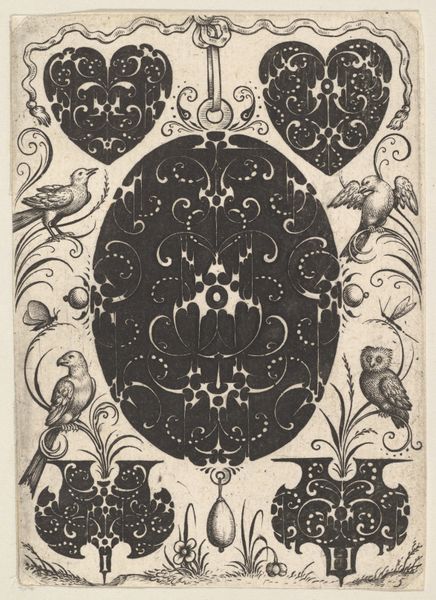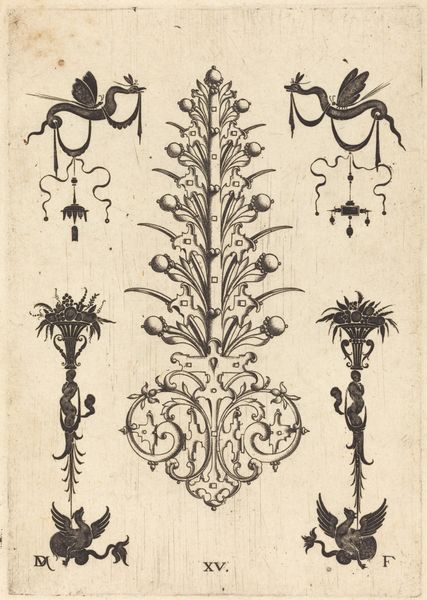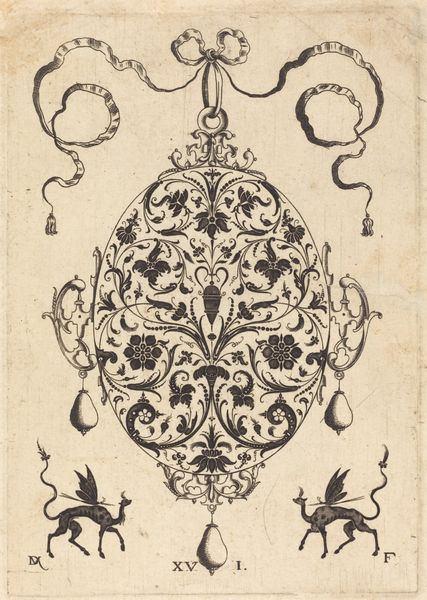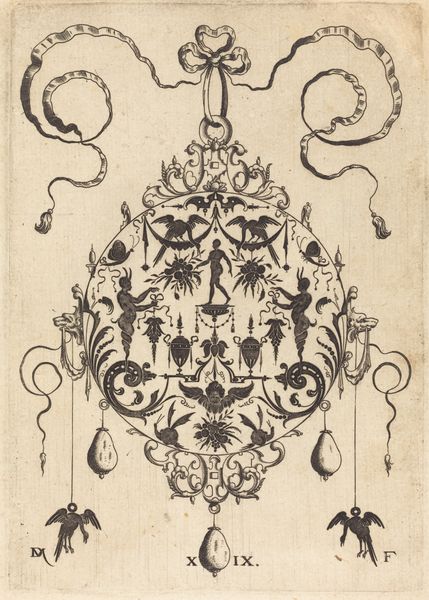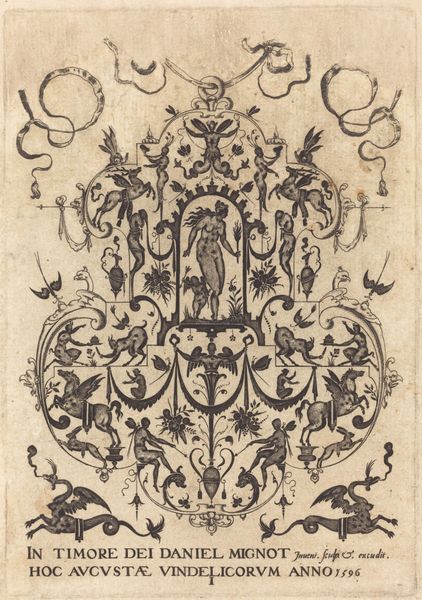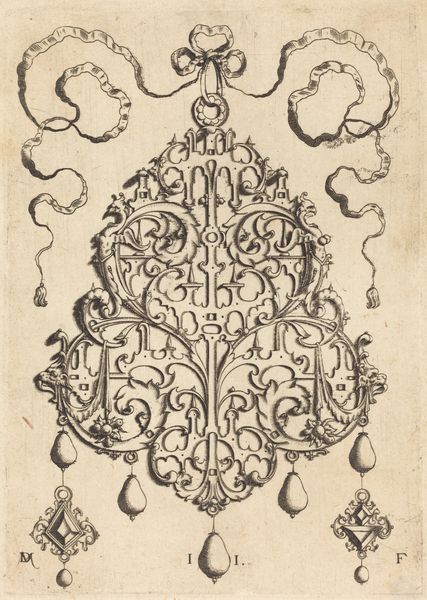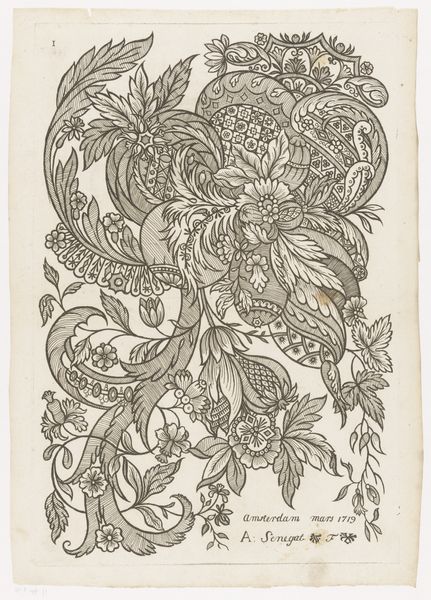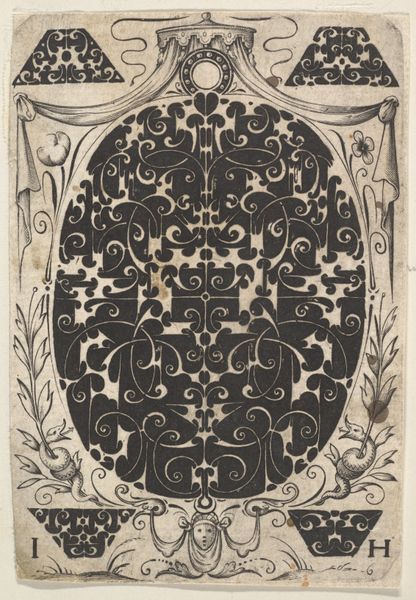
drawing, ink, pen
#
drawing
#
pen drawing
#
form
#
11_renaissance
#
ink
#
line
#
pen
Dimensions: height 138 mm, width 107 mm
Copyright: Rijks Museum: Open Domain
Editor: This intricate pen and ink drawing, "Edelsmidboeket met ranken" from 1614 by Wendel Dietterlin, is full of swirling, organic forms. I'm immediately drawn to the almost obsessive detail. What do you see in this piece beyond just decorative flair? Curator: I see a complex negotiation between artistic invention and the demands of a burgeoning market for luxury goods. Dietterlin, through this precise and reproducible medium of ink on paper, is essentially offering designs to goldsmiths. It collapses the boundaries between artist and artisan. Editor: So it’s not "art for art's sake," but a blueprint? Curator: Precisely. Consider the materials implied here. Gold, gemstones… Dietterlin isn’t just designing an image; he’s shaping the labour that will transform raw materials into status symbols. This connects directly to early capitalist systems and patronage. How does the "bouquet" format influence the context? Editor: I guess presenting it as a bouquet makes it more palatable, disguising the labour somewhat? The floral form feels very controlled, almost industrialized despite its organic nature. It masks the commerce going on underneath the design. Curator: Yes, the natural form rendered with this rigid structure reveals the social forces that shaped its production and, later, its consumption. So different from a wild bouquet. Editor: That's fascinating. I’ll definitely look at Renaissance ornament with new eyes. Thanks. Curator: My pleasure! It’s all about tracing the journey from artist’s hand to consumer’s desire, revealing the power structures inherent in the art world.
Comments
No comments
Be the first to comment and join the conversation on the ultimate creative platform.
